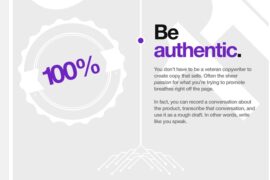Raise your hand: How many of you are stuck in the PUSHING TOO MUCH INFORMATION trap of social media? Right, just as I expected…too many.
Pushing information on social media is like using a garden rake to comb your hair. It’s the wrong tool for the job.
Just today, while explaining the finer details of a successful Twitter presence to a #lawyer, I emphasized the old don’t-toot-your-own-horn let others toot it for you approach to social media. To be interesting, be interested—and not just about what you think. It is most important to stimulate the conversation and draw attention to the ideas of others, inserting your expertise and opinion where it adds value, or entertainment in some cases.
Still, we forget: As witnessed by the incessant stream of look at me Tweets (including those with links to perhaps interesting articles, but no commentary) showing up in my Twitter stream because I follow a lot of law firms and lawyers. That is PUSHING. Cringe. It is pushing your own boat against stream instead of letting the stream lead.
I’ve said it before, here and here, social media is supposed to be social. When you are in a social situation, to establish new relationships you must be aware of those around you at that very moment. You will do best to draw them into a conversation—and yes, that usually means you have to place a higher degree of focus on who you’re speaking to and what matters to them rather than shining a light on yourself. Let others raise your profile. It will deliver greater benefits and it’s really not that hard.
While there’s nothing wrong with pushing information—there’s always luck and timing—expecting meaningful results for the precious investment of resources diminishes greatly when you do not understand and act upon the classic tenants of social behavior and what motivates people to engage.
 Later today I read a timely blog post by David Aaker on Harvard Business Review’s The Conversation, “Secrets of Social Media Revealed 50 Years Ago.” I’m sharing this link with you because I hope that you’ll be enlightened and inspired, like I was, by Aaker’s observations on how the findings of Ernest Dichter, who 50 years ago outlined the key elements of word of mouth persuasion. These elements apply so aptly to social media today.
Later today I read a timely blog post by David Aaker on Harvard Business Review’s The Conversation, “Secrets of Social Media Revealed 50 Years Ago.” I’m sharing this link with you because I hope that you’ll be enlightened and inspired, like I was, by Aaker’s observations on how the findings of Ernest Dichter, who 50 years ago outlined the key elements of word of mouth persuasion. These elements apply so aptly to social media today.
“…[in] the absence of exceptionally entertaining communication, in order to employ social media effectively a brand needs to deliver extraordinary functional, self-expressive, or social benefits.”
Okay…stop here. How many law firms deliver extraordinarily functional or self expressive benefits. Not many. We’re all sort of “just a law firm on the Internet.” With a few exceptions: IMHO. That leaves us with delivering social benefits, agree?
“Listeners…[want] the speaker to be interested in the listener and his or her well-being without a bias. Is the speaker’s intention to sell a product or help me? What is the speaker’s relationship to me?
…[A] firm should promote a dialogue because a listener will be more likely to accept judgments from someone with whom there is an interaction going on. With a dialogue, it is much easier to communicate expertise, interest in the subject matter, and the right motivation because there is a chance to build up a relationship and use reassuring cues. In contrast, a one time, one-way communication will have a harder time demonstrating credibility and motivation.
Aaker concludes that:
“It is amazing that the nearly forgotten theory and practice of word-of-mouth communication and influence from five decades and more ago can be so relevant today.”
I encourage all marketing professionals involved in their entity’s social media outreach, as well as individual attorneys, to read the full article and take the points made to heart and action.
David Aaker is the Vice-Chairman of Prophet and the author of Brand Relevance: Making Competitors Irrelevant and the davidaaker.com blog on branding. There is some terrific stuff here…check it out!




